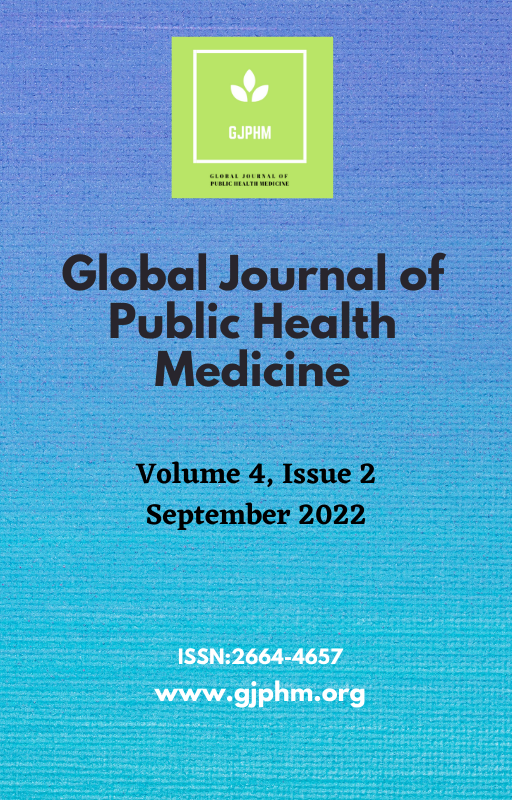EPIDEMIOLOGICAL STUDY OF RISK FACTORS OF RENAL STONES FORMATION AMONG PATIENTS ATTENDING IN BLOCK PHC-THANJAVUR DISTRICT
DOI:
https://doi.org/10.37557/gjphm.v4i2.156Keywords:
Urinary stone; epidemiology, rural population, risk factors.Abstract
Introduction: Urolithiasis is the third most common and painful disease in the globe, afflicting
both men and women. The accumulation of a few minerals and crystalline elements in the renal
calculi and urinary bladder are during the process of metabolism. The study's goals were to
determine the frequency of risk variables for urinary stone patients. Methods: Across-sectional
study had on urinary stone disease in Thanjavur and the surrounding areas. The study included
102 cases, 79 urinary stone patients, and 23 normal patients that all lived in the same area.
Results: A total of 102 participants between the ages of 20 - 70 were studied. Thirty-eight
percentages of urinary stone patients were over 60 years old. In this study, men accounted for 63 %. It was discovered that kidney stone patients were more prevalent in the age groups 41-70 (77%) and <40 (23%), which was statistically significant (15.5±20.51; p=0.01). Patients with lower education levels (56%) and patients from lower-income areas were found. The non-veg food intake status showed a higher proportion of kidney stone patients with control (68% vs. 13%), which was statistically significant (36.06±28.5; p = 0.005). Conclusion: This study confirms that the urinary stone formation may be due to the various environmental factors. The significant associated with the risk factors between control and urinary stone patients were found. The high burdens of urinary stone formation were observed and their associations of socio-demographic behavioral risk factor and the results have been discussed.
Downloads
Downloads
Published
Issue
Section
License
Copyright (c) 2022 D. Ramprakash, D. Arunachalam, Shanmugha Priya, Subash bose

This work is licensed under a Creative Commons Attribution-NonCommercial 4.0 International License.
The authors retain Full copyright of their published article










